Top of the ‘Must-See’ list in Daegu is a hike up the rocky cliff of Gwanbong Peak in Palgongsan to see Gatbawi, a 13ft tall stone statue of Buddha that has a flat rock (‘bawi’) on its head that looks like a traditional Korean hat (‘gat’). Legend says that the statue grants one wish to whomever prays to it. In need of a nature fix and always open to praying to anything that might make my wishes come true, I decided to venture the 20km out of town yesterday to see for myself.
My adventure actually began with getting on the bus. I had a vague idea of which buses I had to take to get there, but still having never made the journey before, you always question yourself and whether you are going the right way. One of the local Korean teachers at Study Factory said you had to take the 719 to Daegu International Airport and change for a different bus there. That was simple enough. I got off at the airport and searched for the other bus stop that would lead me to Gatbawi, which I located quite easily. Only problem was that 2 buses went there. Which one to take? As neither bus was coming for 10 minutes, I headed into the airport to see if there was a tourist information desk to double check. I was in luck. Inside I got a map of Daegu, and the the attendant was eager to speak English and helpfully told me that I should take the 401 bus and that it would take about 40 minutes. As I turned to leave, she handed me a package of postcards. With a big smile she said, “A gift for you!” Ah, how sweet!
The 401 came and before I knew it we had left the city streets and buildings behind and were headed into the wooded mountains. After chugging slowly up the winding roads for 2km, we finally made it to the parking lot of the Palgongsan National Park. Stepping off the bus, two old ladies shoved packages of tissues into my hands. I’m sure that the writing around plastic pockets that held the tissues were some promotional advertising, but I couldn’t be sure. I accepted it gratefully and went on.
I searched for a map so I knew which of the many trails to take, but all the signage was in Korean. One sign post at the start had the Korean symbols for Gatbawi with the English writing underneath. I took a picture. Past experience had taught me that at some point there would be no English writing when I next saw signage and that I would have to rely on knowing the symbols to find my way. Taking a photo ensured I could match the right pictures to the right path. Without a map, I followed the others in front.
The path started out as a wide, stone paved, winding path. More touristy than the hike I had envisioned. I then caught one couple darting off right to a woodland path. That looked more interesting. In my best miming I asked ‘Does this path go to Gatbawi?’ A nod of the head encouraged me to try that course instead. I later learned that there are in fact dozens of pathways up. Choose one, you can’t get too lost! As long as you are going up you are going in the right direction.
Not long into the hike, we reached a ‘village’ with around a half dozen temples. All were ornately decorated with colorful Korean scenes with wood dragon heads mounted from the eves. Nestled in the trees and surrounded by the bright pink hues of Spring flowers, the area was breathtakingly beautiful.
Pit stop done, I continued on. From here the path turned from a gently slopping woodland path to a fairly steep vertical climb up rocky outcrops. The peak was only 850 meters (2,790ft) up, but I found the incline challenging. As I stopped several times on the way up to catch my breath, I was regularly greeted by the locals. They seemed surprised and happy to see a Westerner enjoying their beloved mountain. They offered smiles, hellos, and quite often little treats. I was lovingly given Hersey’s kisses, freshly roasted chestnuts, hard candies, and even a ‘Okham’ (phonetic spelling), which was squishy and round. It looked like it was covered in powdered sugar and had the sweet gooey consistency of a date inside. I had been told that Koreans, especially Daegu citizens, were unfriendly towards Westerners, but I experienced quite the opposite as I hiked up. Their warm hospitality was like nothing I had ever witnessed in all the countries I have ever travelled to.
I reached a plateau, which I thought was the top, but turned out to be just a hermitage station with more temples. I stared out the signage, all in Korean. ‘Where was Gatbawi?’ I pulled up my picture and matched the symbols. Gatbawi was another 0.5km up.
Finally, after about an hour of climbing I reached the summit. At the top was a large man-made platform where hundreds of Koreans were praying on small cream colored mats under a canopy of brightly colored lanterns. They were going through their ritual of standing and kneeling the 100 times they were required to do to make their prayer heard by the Buddha. I watched in fascination at their devotion.
Although observing their religious practice was interesting, I had come to see Gatbawi. For the life of me though, I couldn’t see it. I walked around the site. There was signage and the stone platform, but where was the statue? Reluctantly, I walked in front of the praying congregation and there I finally saw it. All this time it had been impossible to see with all the low hanging lanterns above. At its base were bowls of fruit, apples and oranges, left as offerings. His left hand was cupped on its lap holding a weathered pill box, which lends it to the official name of the statue – Stone Seated Medicine Buddha. This 9th Century treasure looked funny with his flat stone on top of his head. Not like other Buddhas I’ve seen before. I stared a moment longer, but felt self-conscious in the front, so moved off to the side to watch the praying some more.
Part of me wanted to partake in the ritual, but I felt false doing so, as it wasn’t my religion, plus I didn’t think my legs were strong enough to complete the 100 required kneelings and still get me back down the mountain. So, I took the easy way out and positioned a coin on the rock face, which was also said to make your one heartfelt wish come true. I checked out the tourist shop, and then decided to head back.
A little way down from the peak, I found a large rock overhanging the cliff. In front, were unobstructed, on high views of the national park. Shades of green from the various tree types from pine trees to deciduous painted the ground, whilst a hazy blue sky decorated the top half. From that viewpoint, I could still hear the chanting of the prayers above. I stayed there a long while contemplating life. Gatbawi may be a place for religious pilgrimage for Buddhist Koreans, but my spiritual place was with nature. Here, as high as I could be at that moment, I said my prayers and let them float away with the gentle wind out into the wild for the Universe to hopefully hear.

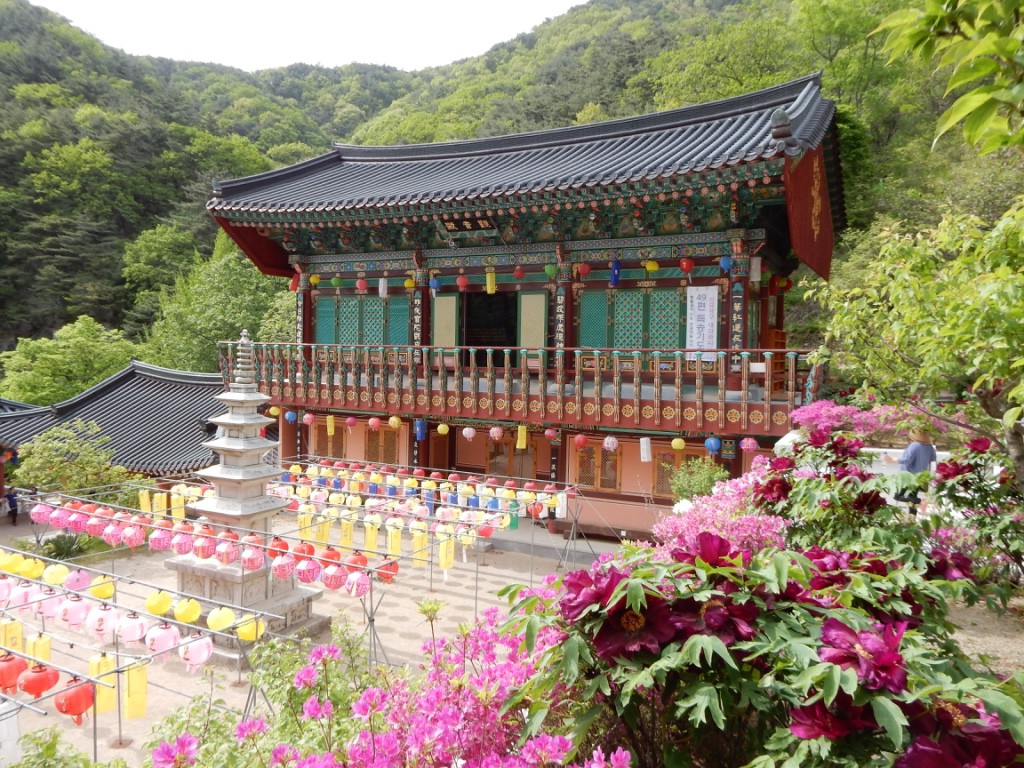
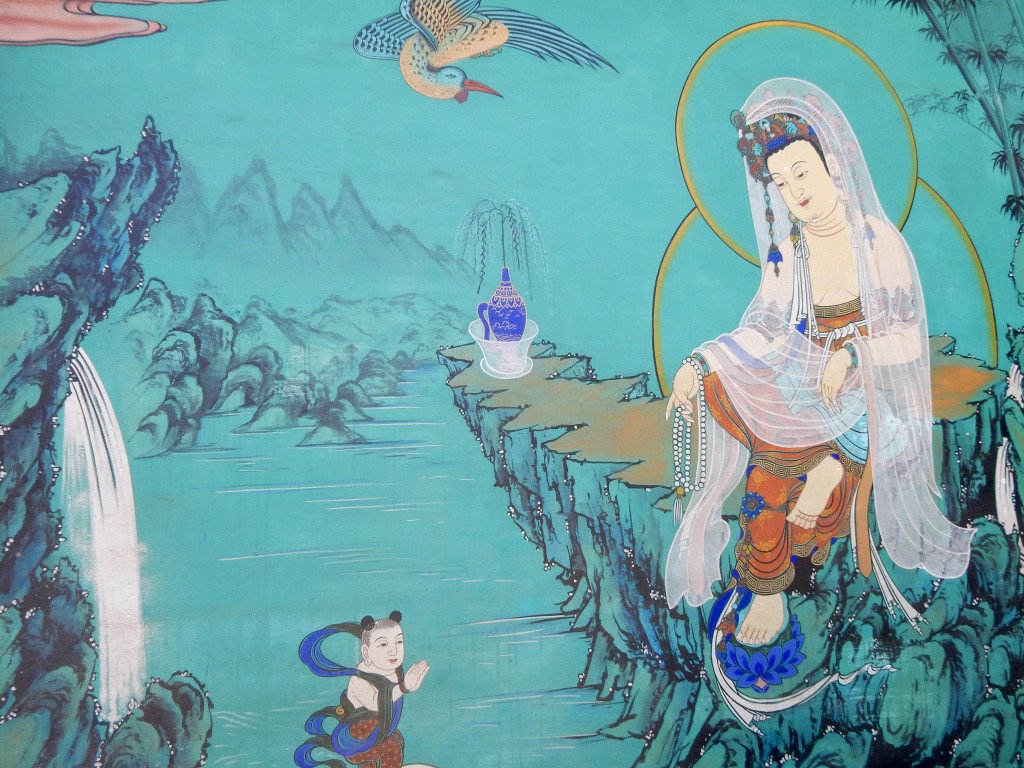
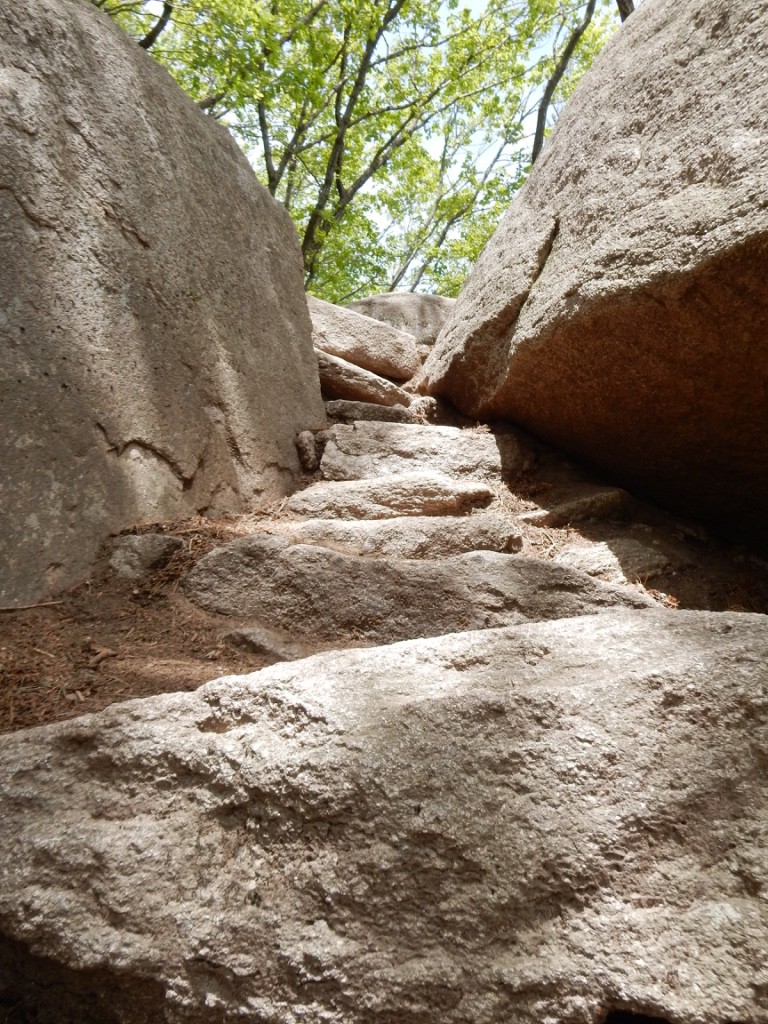
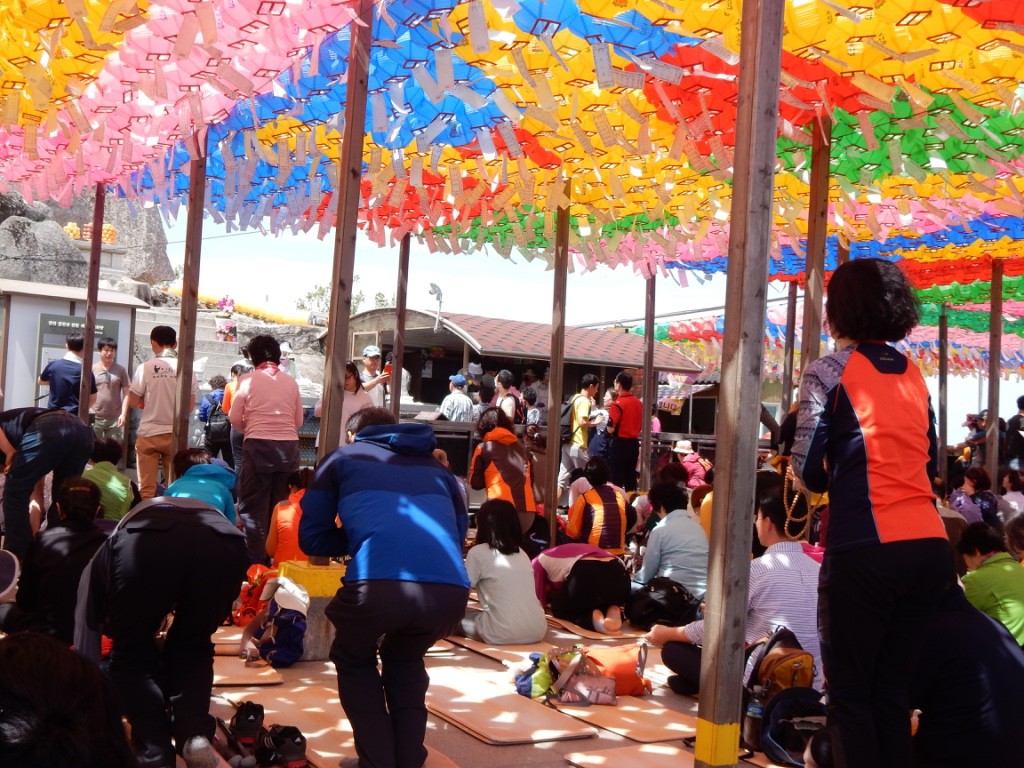
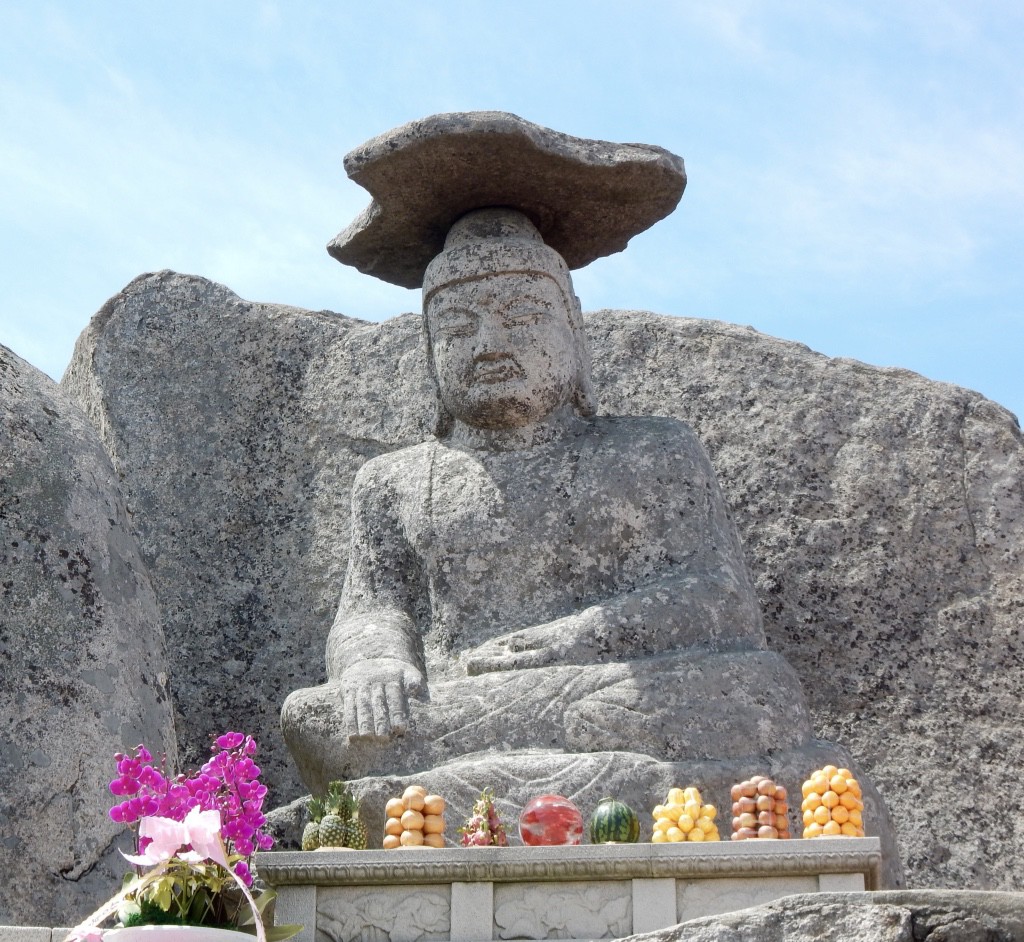
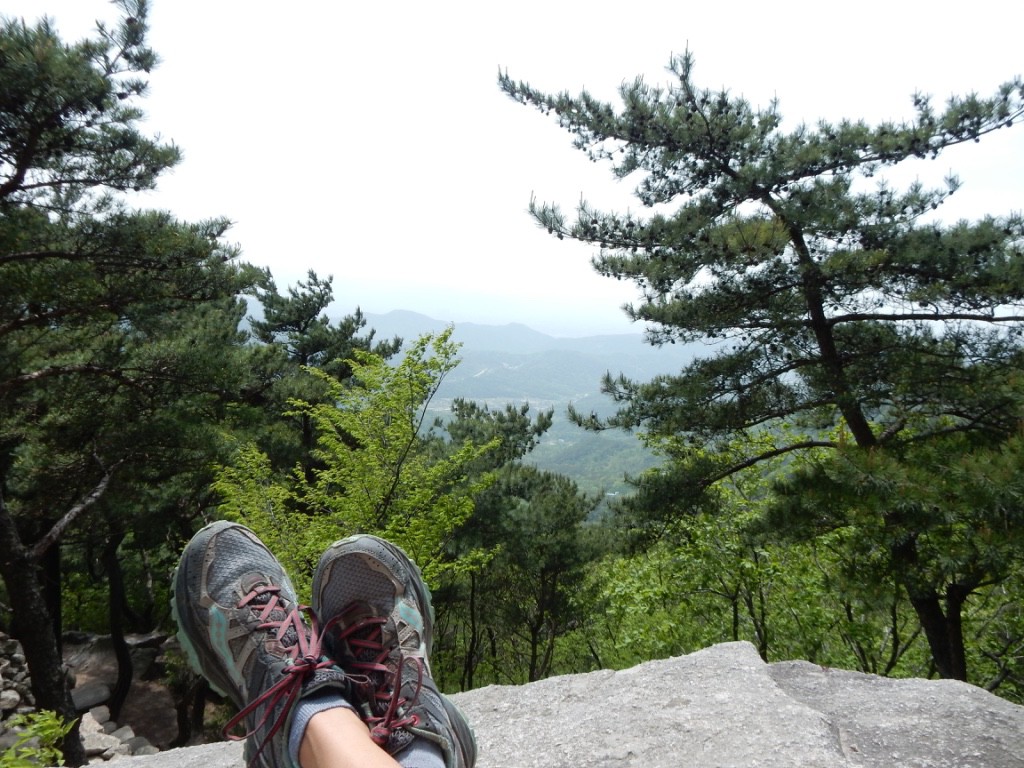
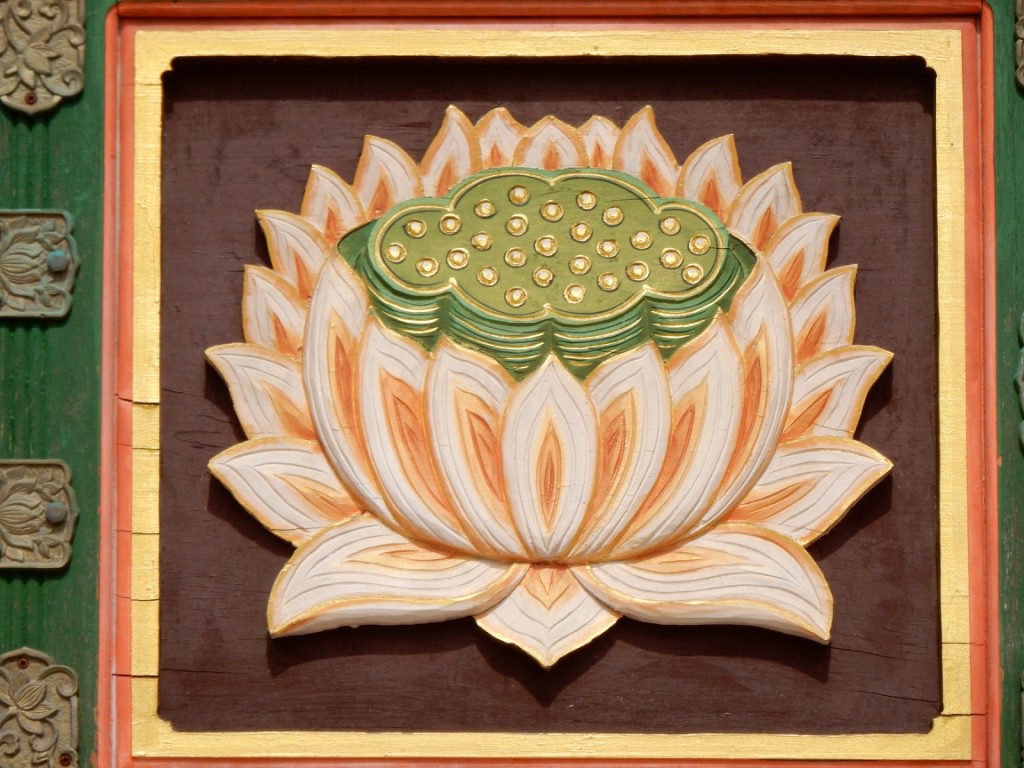


Hello, Gwen!! So enjoyed your travelogue entry. Felt like I was there with you, almost! I wil try to keep up with you and wish you well on your adventures. I think you are on the right track. May your prayers be answered.